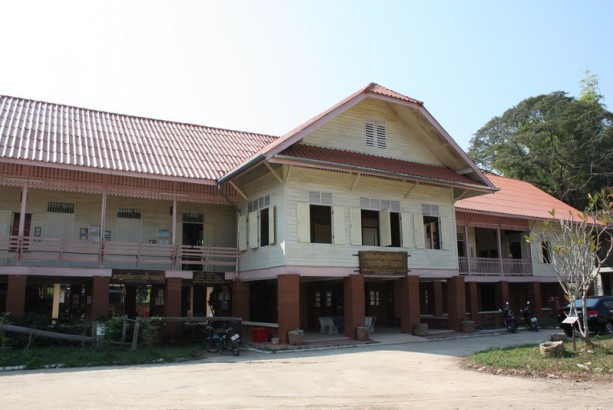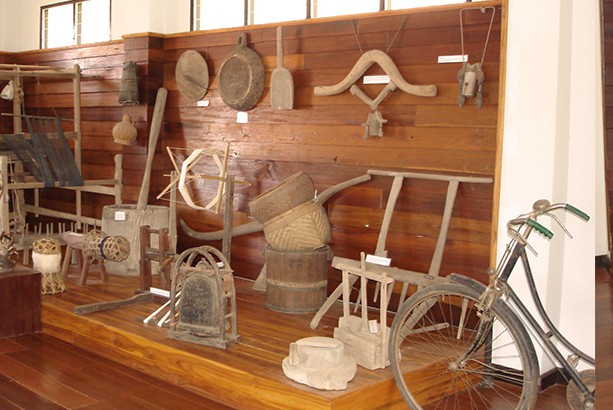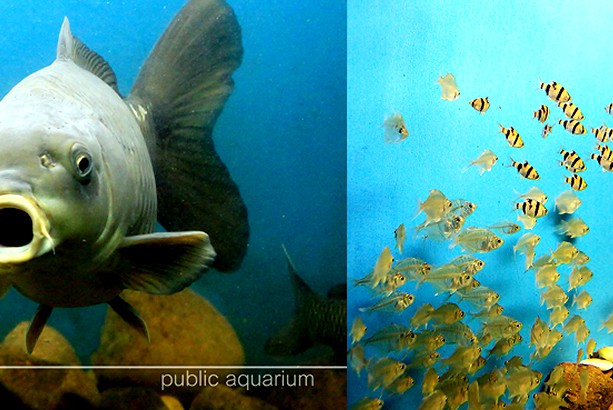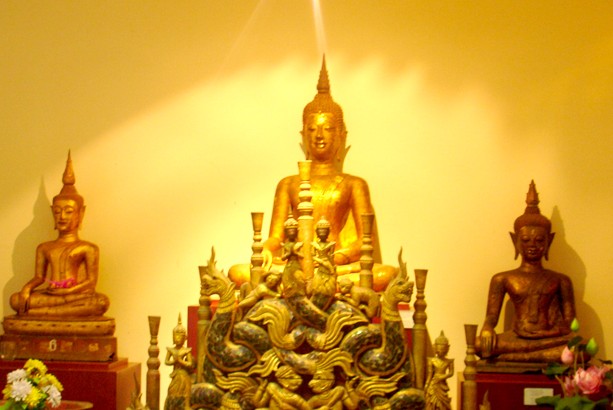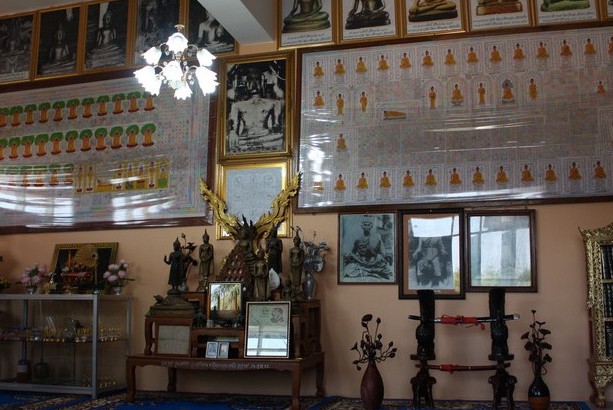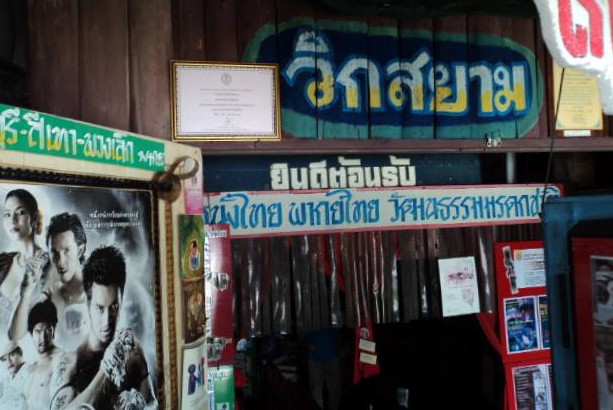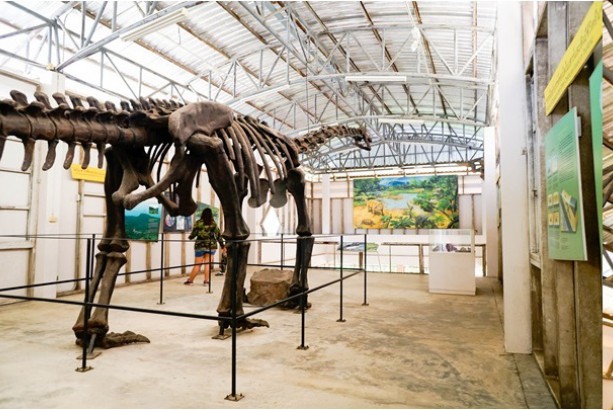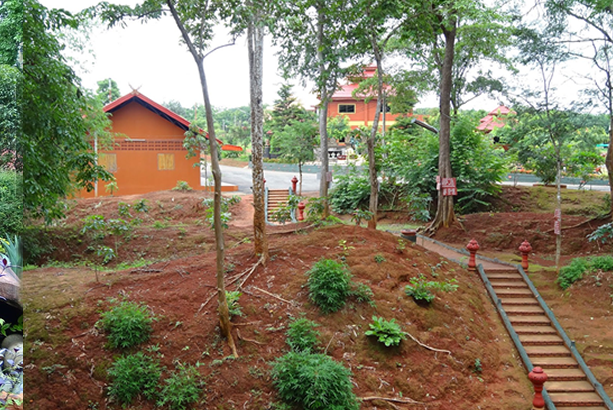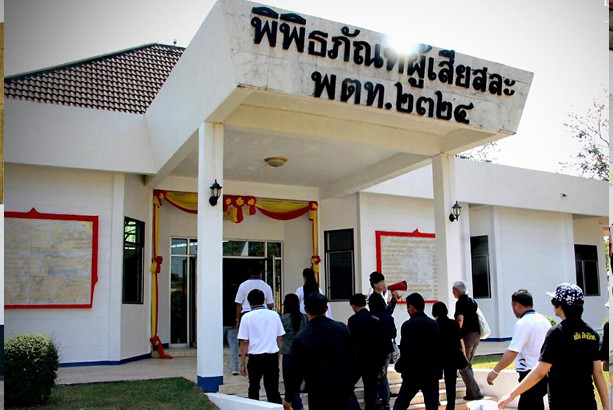Gallery
Information
Founded in 2003, the museum used an old building, which was once Wat Si Chum Primary School in Dok Kham Tai District, Phayao to transform into local museum. Operating under the supervision of Dok Kham Tai Town Municipality, Lanna Folk Museum displays pieces of religious art, culture, way of life, as well as traditional household utensils. “Dok Kham Tai” means a species of yellow gold flower originated in central region (Kham = gold, Tai = southern towns of the North, which are geographically central for the northerners). The flora resemble Acacia, but with thorns on its stems. Its leaf is smaller than tamarind leaf. The resin derived from the stem can be used as paper glue.
Lanna Folk Museum consists of 2 floors. Previously, the ground level was once an open wide space under the upper floor with fragile wooden stilts. The Municipality hence converted into brick pillars. The ground floor comprises 3 sections. The first section features “Lanna folk music instruments”. One of the most interesting items is Klong Aew or tueng nong drum. The name Klong Aew was from its unique shape that resembles human waist. In the past, it was used in the Nail Dance Ceremony that the northern royal family arranged to welcome state guests and to celebrate in religious ceremonies. Klong Chaiya Mongkol or Bucha Drum was once used during wartime, to declare victory or to use in the rain praying rituals. Currently, it is used in religious activities and auspicious ceremonies.
The second section highlights “Traditional herbs” with herb samples, which are well kept in glass cabinets. There are also wall exhibitions on herb of various types, starting with the “Herbs in the neighbourhood is your nearest hospital”. Each explains the attributes of herbal medicines that cure illness. The third section, on the ground level, has a “Community Library” whereby villagers and general public can use. The upper floor displays the “Images of Phayao amulets” across the walls. The museum specially showcases these because Phayao is an ancient city with more than 900 years of history. Many of Buddha images originated in Phayao are thus highly treasured.
The “Buddhist art of Lanna Kingdom” room on the left features Buddha images and ritual utensils. Most items were donated by temples and local people. The origin of certain pieces remains unknown, whereas majority of these artifacts are not properly registered due to the lack of authorised officials. Important artifacts include sandstone Lamphun Buddha image, white jade Burmese Buddha image, wooden Buddha image, pottery, celadon bowl, bricks, ancient swords, Buddhist ritual utentils, pab sa, Khan Tor Seel cabinet, Khan Kaew Tang Sam, Sattaphan. Interestingly, the “pab sa” or palm leaf as known in central language, is a script that contains formulae of traditional medication, such as poison, mysterious potion, etc. Only the elderly or local monks are able to read as Lanna script was banned and lost during the World War II. Most pab sa were fired, while others were grinded and used as a mixture of medicines or Buddha images. “Khan Kaew Tang Sam” is used to hold flowers, incense and candles as the offerings to the Triple Gems because Lanna people did not have vases. Lanna people believe that if there was a terminally ill elderly in the house, family members must ask for forgiveness with Khan Kaew Tang Sam and mention “Should he/she be alive, please grant. Should he/she be dead, please grant”, so that such person did not need to tolerate the pains for too long.
“Sattaphan” is the 7-pole candelabra used to worship the Triple Gems. Currently, it has become the logo of Phayao University. Nevertheless, it has also become a decorative figure of hotels in Bangkok. Regrettably, the figure was even adapted into shoes holders, making Lanna people feel awful that the Lanna Art has not been cherished by some people. Furthermore, the Buddhist art” room was decorated with ancient images, such as the image of Boon Ruang Temple’s most holy abbot, the image of Boon Ruang Temple’s vihara, a simplified-Lanna architecture that resembles the splendid one at Phra Chao Tung Luang Temple. The next one is the “King Bhumibol Adulyadej Commemorative Room”. Most of the images were from the museum’s own collections, where as some were donated by local people. Interesting images include the Birth Certificate of King Bhumibol Adulyadej, the Royal Biography of King Bhumibol Adulyadej, images of King Bhumibol Adulyadej during his first visit to Phayao Province in 1958, Si Khom Kham Temple, and many more.
The last room, “Indigenous life of Lanna”, exhibits the way of life and household utensils of Lanna people. There are “Simulated Lanna kitchen” with a thatched roof that features many interesting items inside, ranging from stove, wooden rice cooker, rice container, rice tray, cabinet, jar, rice miller, ancient flatiron, loom to agricultural and fishing tools, such as coop, fishnet, different types of Lanna fish trap and craftsman tools. Another interesting thing in this room is the exhibition on the belief of superstition. The worship of superstition had long inherited among Lanna people since before the arrival of Buddhism. Lanna people believe that the world of human and the world of spirit are overlapping and relating to one another. There was a tradition that worships the spirit to show gratefulness for their protection from harm. Lastly, visitors will view the “Indigenous life of Lanna”. This section displays a wide variety of Tungs (known as flag in central region). Each Tung is unique in shape, colour, decorative details, the making and usage. Tung serves as the representative that brings a soul to heaven and must be placed up high. “Red Tung means a sudden death”. “Three-tail Tung is used in funeral as a guide for the deceased, which resembles the teaching of Buddha in the Three Characteristics, including anicca, dukkha, anatta”. “Tung Chor Noi Pan Duang is for auspicious ceremony and must include 1,000 Tungs, such as the life prolonging ceremony, chao noi tung jai ceremony”.
Management
Organization Museum
Important / Interesting artifacts
-
Map
Address And Contact Number
Telephone : 054-491-490 (เทศบาล)
Operating hours
Monday - Friday 8.30 am - 4.00 pm
Admission fee
Free
Getting There
Located 17 kilometres from Phayao town.
Proper for General Public
Proper for Children
Credit Card
Advanced Booking
-
Disability Information
-
FACILITY
Available




 ขยายขนาดตัวอักษร
ขยายขนาดตัวอักษร



 เพิ่มระยะห่างตัวอักษร
เพิ่มระยะห่างตัวอักษร

 เส้นช่วยในการอ่าน
เส้นช่วยในการอ่าน
 เน้นการเชื่อมโยง
เน้นการเชื่อมโยง
 ปรับชุดสี
ปรับชุดสี








 NIGHT AT THE MUSEUM FESTIVAL
NIGHT AT THE MUSEUM FESTIVAL  E-Shopping
E-Shopping 
